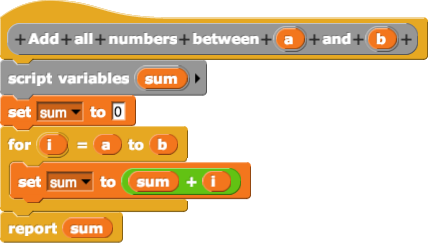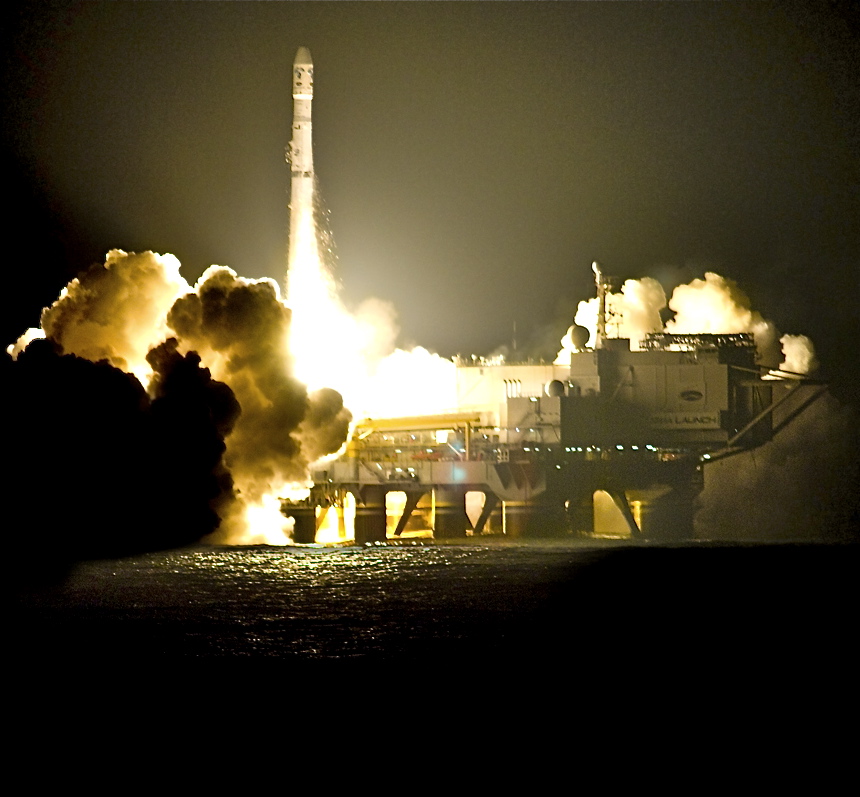|
Drakon-chart
DRAKON is a free and open source algorithmic visual programming and modeling language developed within the Buran space project following ergonomic design principles. The language provides a uniform way to represent flowcharts of any complexity that are easy to read and understand. The DRAKON Editor, which was released in September 2011, is an implementation of the language available in the public domain. It can be used for creating documentation, or for creating visual programs that can be converted to source code in other languages. Unlike UML's philosophy, DRAKON's language philosophy is based on being augmented if needed, by using a hybrid language, which can be illustrated as "incrustating code snippets from text language used into shape DRAKON requires". This way, DRAKON always remains a simple visual language that can be used as an augmentation for a programmer who is interested in making their own project code easier to support or other long-term needs for exampl ... [...More Info...] [...Related Items...] OR: [Wikipedia] [Google] [Baidu] |
Flowchart
A flowchart is a type of diagram that represents a workflow or process. A flowchart can also be defined as a diagrammatic representation of an algorithm, a step-by-step approach to solving a task. The flowchart shows the steps as boxes of various kinds, and their order by connecting the boxes with arrows. This diagrammatic representation illustrates a solution model to a given problem. Flowcharts are used in analyzing, designing, documenting or managing a process or program in various fields. * ''Document flowcharts'', showing controls over a document-flow through a system * ''Data flowcharts'', showing controls over a data-flow in a system * ''System flowcharts'', showing controls at a physical or resource level * ''Program flowchart'', showing the controls in a program within a system Notice that every type of flowchart focuses on some kind of control, rather than on the particular flow itself. However, there are some different classifications. For example, Andrew Veronis ... [...More Info...] [...Related Items...] OR: [Wikipedia] [Google] [Baidu] |
Visual Programming Language
In computing, a visual programming language (visual programming system, VPL, or, VPS) is any programming language that lets users create programs by manipulating program elements ''graphically'' rather than by specifying them ''textually''. A VPL allows programming with visual expressions, spatial arrangements of text and graphic symbols, used either as elements of syntax or secondary notation. For example, many VPLs (known as ''dataflow'' or ''diagrammatic programming'') are based on the idea of "boxes and arrows", where boxes or other screen objects are treated as entities, connected by arrows, lines or arcs which represent relations. Definition VPLs may be further classified, according to the type and extent of visual expression used, into icon-based languages, form-based languages, and diagram languages. Visual programming environments provide graphical or iconic elements which can be manipulated by users in an interactive way according to some specific spatial grammar for p ... [...More Info...] [...Related Items...] OR: [Wikipedia] [Google] [Baidu] |
Academician Pilyugin Center
Scientific Production Association Of Automation And Instrument-Building (russian: Научно-производственный центр автоматики и приборостроения), also known as the Academician Pilyugin Center is a company based in Moscow, Russia. It is currently a Roscosmos subsidiary. The Scientific Production Association of Automated Instruments develops guidance, navigation, and flight control systems for ballistic missiles, space launch vehicles, and spacecraft. It has produced systems for the Soyuz, Proton, N1, and Zenit launch vehicles; the Moon, Mars, Venus, and Vega probes; the Buran space shuttle; and the intercontinental ballistic missiles. In 1997 it was named after Nikolay Pilyugin Nikolai Alekseevich Pilyugin (russian: Никола́й Алексее́вич Пилю́гин; , Krasnoye Selo - 2 August 1982) was Soviet chief designer of rocket guidance systems. He was a designer of control systems for boosters and spacecra ..., ... [...More Info...] [...Related Items...] OR: [Wikipedia] [Google] [Baidu] |
Dragon
A dragon is a reptilian legendary creature that appears in the folklore of many cultures worldwide. Beliefs about dragons vary considerably through regions, but dragons in western cultures since the High Middle Ages have often been depicted as winged, horned, and capable of breathing fire. Dragons in eastern cultures are usually depicted as wingless, four-legged, serpentine creatures with above-average intelligence. Commonalities between dragons' traits are often a hybridization of feline, reptilian and avian features. Scholars believe huge extinct or migrating crocodiles bear the closest resemblance, especially when encountered in forested or swampy areas, and are most likely the template of modern Oriental dragon imagery. Etymology The word ''dragon'' entered the English language in the early 13th century from Old French ''dragon'', which in turn comes from la, draconem (nominative ) meaning "huge serpent, dragon", from Ancient Greek , (genitive , ) "serpent, giant s ... [...More Info...] [...Related Items...] OR: [Wikipedia] [Google] [Baidu] |
Icons Of Visual Programming Language --DRAKON--
An icon () is a religious work of art, most commonly a painting, in the cultures of the Eastern Orthodox, Oriental Orthodox, and Catholic churches. They are not simply artworks; "an icon is a sacred image used in religious devotion". The most common subjects include Christ, Mary, saints and angels. Although especially associated with portrait-style images concentrating on one or two main figures, the term also covers most religious images in a variety of artistic media produced by Eastern Christianity, including narrative scenes, usually from the Bible or the lives of saints. Icons are most commonly painted on wood panels with egg tempera, but they may also be cast in metal, carved in stone, embroidered on cloth, done in mosaic or fresco work, printed on paper or metal, etc. Comparable images from Western Christianity can be classified as "icons", although "iconic" may also be used to describe a static style of devotional image. In the Greek language, the term for icon painting ... [...More Info...] [...Related Items...] OR: [Wikipedia] [Google] [Baidu] |
Proton-M
The Proton-M, (Протон-М) GRAU index 8K82M or , is an expendable Russian heavy-lift launch vehicle derived from the Soviet-developed Proton. It is built by Khrunichev, and launched from sites 81 and 200 at the Baikonur Cosmodrome in Kazakhstan. Commercial launches are marketed by International Launch Services (ILS), and generally use Site 200/39. The first Proton-M launch occurred on 7 April 2001. Proton flew its most recent mission on 13 December 2021, launching two Ekspress communication satellites into geostationary orbit. As of August 2020, a number of Roscosmos and other Russian government missions remain on Proton launch manifest. Vehicle description The Proton-M launch vehicle consists of three stages; all of them powered by liquid rocket engines using the hypergolic propellant combination of dinitrogen tetroxide as the oxidizer, and unsymmetrical dimethylhydrazine for fuel. The first stage is unique in that it consists of a central cylindrical oxidizer tank ... [...More Info...] [...Related Items...] OR: [Wikipedia] [Google] [Baidu] |
Launch Vehicle
A launch vehicle or carrier rocket is a rocket designed to carry a payload (spacecraft or satellites) from the Earth's surface to outer space. Most launch vehicles operate from a launch pad, launch pads, supported by a missile launch control center, launch control center and systems such as vehicle assembly and fueling. Launch vehicles are engineered with advanced aerodynamics and technologies, which contribute to large operating costs. An orbital spaceflight, orbital launch vehicle must lift its payload at least to the boundary of space, approximately and accelerate it to a horizontal velocity of at least . Suborbital spaceflight, Suborbital vehicles launch their payloads to lower velocity or are launched at elevation angles greater than horizontal. Practical orbital launch vehicles are multistage rockets which use chemical propellants such as Solid-propellant rocket, solid fuel, liquid hydrogen, kerosene, liquid oxygen, or Hypergolic propellants. Launch vehicles are cla ... [...More Info...] [...Related Items...] OR: [Wikipedia] [Google] [Baidu] |
Fregat
Fregat (russian: Фрегат, ''frigate'') is an upper stage developed by NPO Lavochkin in the 1990s, which is used in some Soyuz and Zenit launch vehicles, but is universal and can be used as a part of a medium and heavy class launch vehicles. Fregat became operational in February 2000. Its liquid propellant engine uses UDMH and N2O4. Fregat's success rate is 97.8% (with 2 failures in 93 launches), which makes it one of the most reliable upper stages in the world. Fregat has successfully delivered more than 300 payloads into different orbits. It remains the only upper stage in the world that can place its payload into 3 or more different orbits in a single launch. Description The Fregat upper stage is designed for injecting large payloads into a low, medium-height or high geosynchronous orbit. Fregat is a versatile upper stage, in addition to orbital insertion, it can be used as an escape stage to send modern space probes into interplanetary trajectories (e.g. Venus Express ... [...More Info...] [...Related Items...] OR: [Wikipedia] [Google] [Baidu] |
Orbit Insertion
Orbit insertion is the spaceflight operation of adjusting a spacecraft’s momentum, in particular to allow for entry into a stable orbit around a planet, moon, or other celestial body. This maneuver involves either deceleration from a speed in excess of the respective body’s escape velocity, or acceleration to it from a lower speed. The result may also be a transfer orbit. There is e.g., the term ''descent orbit insertion''. Often this is called orbit injection. Deceleration The first kind of orbit insertion is used when capturing into orbit around a celestial body other than Earth, owing to the excess speed of interplanetary transfer orbits relative to their destination orbits. This shedding of excess velocity is typically achieved via a rocket firing known as an orbit insertion burn. For such a maneuver, the spacecraft’s engine thrusts in its direction of travel for a specified duration to slow its velocity relative to the target body enough to enter into orbit. Another tec ... [...More Info...] [...Related Items...] OR: [Wikipedia] [Google] [Baidu] |
Sea Launch
Sea Launch was a multinational—Norway, Russia, Ukraine, United States—spacecraft launch company founded in 1995 that provided orbital launch services from 1999–2014. The company used a mobile maritime launch platform for equatorial launches of commercial payloads on specialized Zenit-3SL rockets from a former mobile/floating oil drilling rig renamed ''Odyssey''. By 2014, it had assembled and launched thirty-two rockets, with an additional three failures and one partial failure. All commercial payloads were communications satellites intended for geostationary transfer orbit with such customers as EchoStar, DirecTV, XM Satellite Radio, PanAmSat, and Thuraya. The approach Sea Launch LLC used was to assemble the launcher on a purpose-built ship ''Sea Launch Commander'' in Nimitz Rd., Long Beach, California, USA. The assembled spacecraft was then positioned on top of the self-propelled ''Odyssey'' floating launch platform and moved to the equatorial Pacific Ocean for launc ... [...More Info...] [...Related Items...] OR: [Wikipedia] [Google] [Baidu] |
Computer-aided Software Engineering
Computer-aided software engineering (CASE) is the domain of software tools used to design and implement applications. CASE tools are similar to and were partly inspired by Computer-Aided Design (CAD) tools used for designing hardware products. CASE tools were used for developing high-quality, defect-free, and maintainable software. CASE software is often associated with methods for the development of information systems together with automated tools that can be used in the software development process. History The Information System Design and Optimization System (ISDOS) project, started in 1968 at the University of Michigan, initiated a great deal of interest in the whole concept of using computer systems to help analysts in the very difficult process of analysing requirements and developing systems. Several papers by Daniel Teichroew fired a whole generation of enthusiasts with the potential of automated systems development. His Problem Statement Language / Problem Statement An ... [...More Info...] [...Related Items...] OR: [Wikipedia] [Google] [Baidu] |







